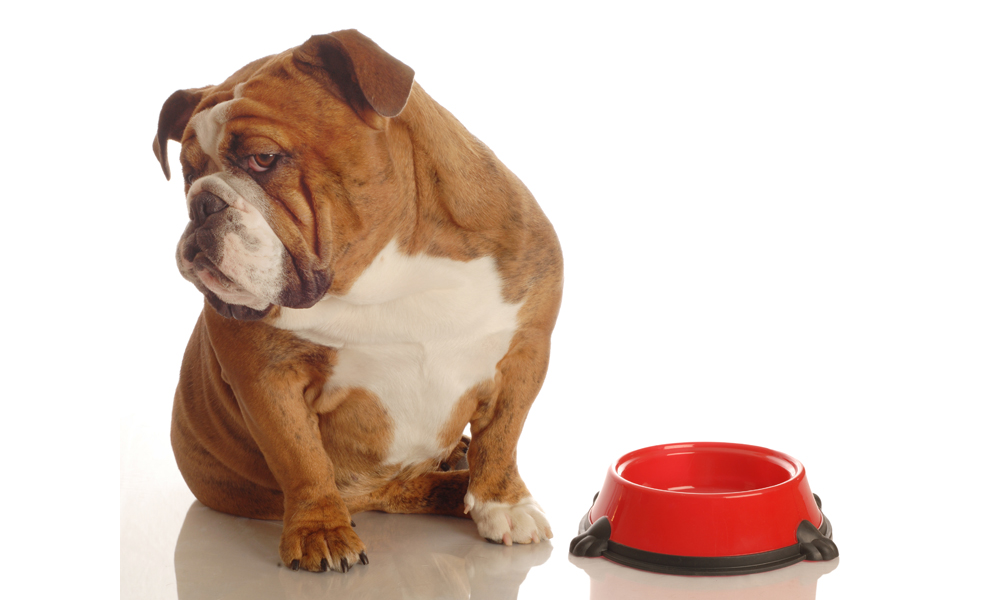It’s something we hear from frazzled dog owners all the time: What do I do if my dog won’t eat dog food? What can I feed a picky dog?
Most dogs can’t get enough of their food and will spend a good part of their day pursuing it if given the chance. But there are some dogs out there that just won’t eat. Whenever you put out dog food, they seem disinterested. Pet parents find themselves worrying their picky dog is starving itself, and some go to extreme lengths to try and entice their pet to eat.
But cooking up a premium chicken breast or a prime rib steak every night for your pup isn’t kind to monthly budgets. Not to mention it lacks the complete nutrition your dog needs for good health. And don’t forget the toll it takes on your schedule! There’s a better way. With a little thought and consistency, you can most certainly find a food to please your picky eater.
What defines a picky dog?
If you’re used to dogs immediately inhaling anything placed in front of them, then a dog that eats slowly or takes a few minutes to begin eating can seem plenty picky. However, these behaviors are within the normal spectrum of eating for dogs.
For a dog to be considered truly picky with food, they’ll usually meet one of these two criteria:
- They take more than 20 minutes to finish their bowl of food.
- They refuse to eat their food entirely.
What makes a dog picky?
While it isn’t always easy to identify why a dog isn’t eating well, here are five of the most common explanations:
- Your dog may be genetically prone to pickiness. Certain breeds have lower appetites or a natural tendency to eat slowly.
- You may have accidentally trained your dog to be picky. Inconsistent meal schedules, too many treats or table scraps, or feeding treats and table scraps when your dog has refused its food can create and reinforce bad feeding habits in your dog.
- Your dog may have an aversion to a particular taste, texture or smell. Some dogs just don’t like a particular aspect of the food they’re given and will be reluctant to dig in as a result.
- Your dog may be feeling anxious. If there are other dogs eating in the same room or if the space is busy, chaotic or noisy, your dog may feel too insecure to eat.
- Your dog may have a medical problem that makes eating difficult. We’ll cover this in more detail in the next section. Generally, if your dog is in pain when they eat, they can develop an aversion to eating altogether. They may also simply be too distracted or lethargic to find their appetite.
Will a picky dog starve itself?
No, an otherwise healthy dog will not let itself starve. This is a profound fear for dog owners with picky pets, though, and it’s the main reason bad feeding habits form.
We love our dogs, and the thought of them not getting enough to eat is genuinely upsetting. Our feelings of guilt and fear can make staying firm about feeding schedules and habits much harder.
The exception: Pain or disease
While a healthy dog won’t starve itself, there are some exceptional situations where that risk may arise.
If your dog’s pickiness comes from an underlying medical problem, they may avoid food to the point of dangerous weight loss. This is why it’s important to rule out larger health issues when addressing picky eating.
Some health problems that can lead to food avoidance include:
- Periodontal disease. Sore and inflamed gums, cracked or missing teeth and other painful ailments of the mouth can make starvation preferable to the pain of eating for some dogs.
- Food or environmental allergies. Allergies can cause physical discomfort as well as feelings of lethargy or depression, ultimately suppressing a dog’s interest in food. If your dog is exhibiting symptoms such as nausea, diarrhea, vomiting, red and inflamed skin or itching and biting themselves excessively, these may be signs of an allergy.
- Food intolerance. Allergies are caused by an immune system response, while food intolerances are often due to imbalances in the bacterial colonies of the gut. However, the observable symptoms of a food intolerance are very similar to allergies, and can result in a similar lack of interest in food.
So, what is the best dog food for picky eaters?
First, let’s be abundantly clear about one thing:
The best food for your picky dog is always dog food.
It can be tempting to give in and feed your dog whatever they’ll eat, even if it’s exclusively fried eggs and potato chips. But a dog’s nutritional needs are complex and different from those of a human. Feeding them an inappropriate diet can lead to deficiencies, health problems and potentially life-threatening conditions.
It can take time to find the right food to tempt your pup, but the effort is worth it to ensure they live a long, happy and healthy life.
With that in mind, here are three simple steps to follow to find the best dog food for your picky eater.
- Look for a food that is complete and balanced. It’s always a good idea to double check your food is providing all the protein, carbohydrates and micronutrients your dog requires. Then you can be confident your dog is getting the complete nutrition they require every time they do eat, helping you to stay firm with your routine.
- Look for food from smaller companies that pride themselves on quality, value and nutrition. Focus on nutrient-dense foods that don’t require you to feed over 4 cups for a 100 lb. dog.
- Look for a food with excellent pre- and probiotics. Preventing illness, discomfort and upset stomachs is essential to making meal time a positive experience for your pet. NutriSource formulas are specifically designed to support a healthy gut, with some of the best pre- and probiotic levels available on the market.
- Find a food your dog likes. We know this step sounds like we’re being facetious. What we mean is, find a food that has the taste, smell and texture your dog likes. This can mean trying wet and dry as well as trying different formulas that emphasize different proteins. The goal is to find a food that your dog takes an immediate liking to, and that can be a different food for every picky eater.
- Take steps to entice your dog. Adding warm water to kibble or topping dry food with a nutritious bone broth topper like NutriSource Come-pooch-a can be just the trick to help a particularly stubborn pup perk up.
Keep a consistent routine
In addition to choosing the right food, establishing the right routine is key to putting the pickiness out to pasture. As with so many other parts of pet ownership, consistency is essential.
When it comes to meal times, you should:
- Choose a meal time (or times) and stick to it as closely as you can.
- Leave food out for no longer than 20 minutes.
- After 20 minutes have passed, remove what hasn’t been eaten.
- Don’t feed any treats or more food until the next scheduled feeding time, then repeat these steps.
If your dog eats nothing for a day or two, that’s OK. They won’t suffer any nutritional hardship so long as they are otherwise healthy. Once they do get hungry, they should eat what you give them far more readily.
If you’re feeding dry food, you can simply add any uneaten food back into the container you store it in. However, if you’re feeding wet food, it’s best to discard uneaten food after each mealtime to avoid spoiling. This can add up quick, so one solution if you’re feeding wet food is to start with very small amounts to see what your dog eats, if anything. Once your dog begins to eat consistently, you can gradually increase to a complete meal.
Your picky dog has met their match with NutriSource
Mouth-watering recipes, nutrient-dense formulas and higher Kcal counts mean more nutrition is packed into every morsel of NutriSource foods and supplements. Those vitality-supporting supplements and gut-healthy pre- and probiotic rich foods are all but guaranteed to turn your picky pup into an eager eater.
For an added nutritious bonus, treat your dog to NutriSource Come-pooch-a a savory meaty bone broth topper that’s packed with activated postbiotics from fermentation product, that thrive in the gut and promote a healthy gut ecosystem for digestion support.


